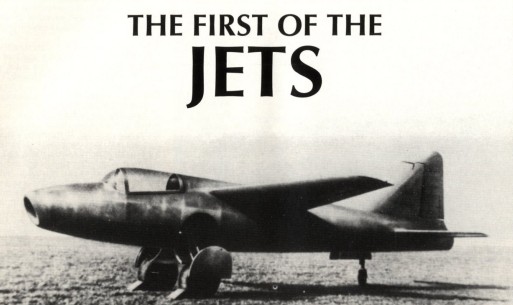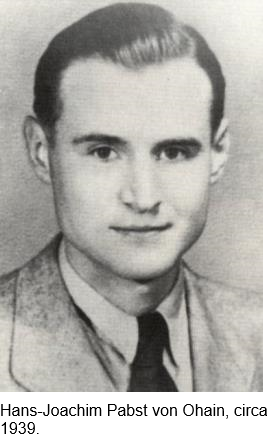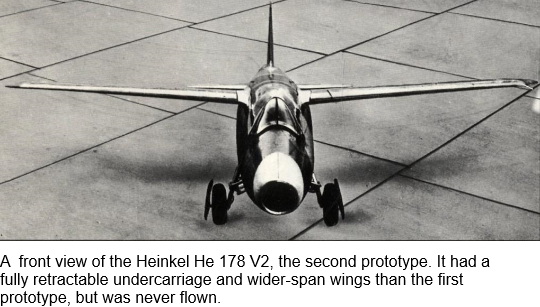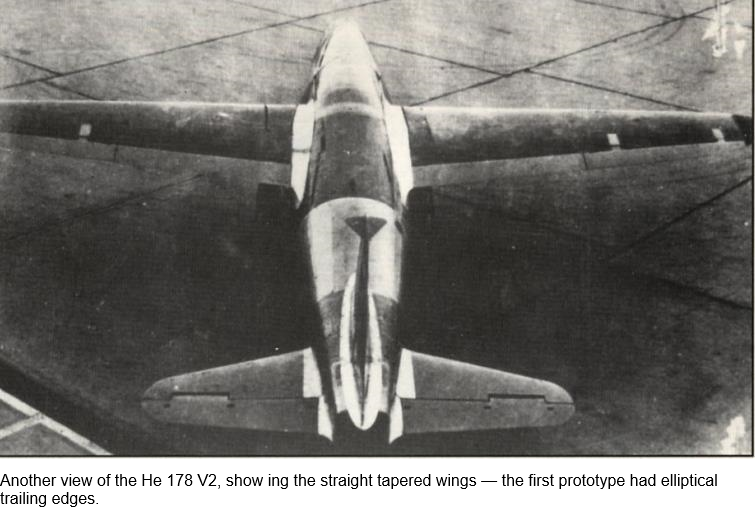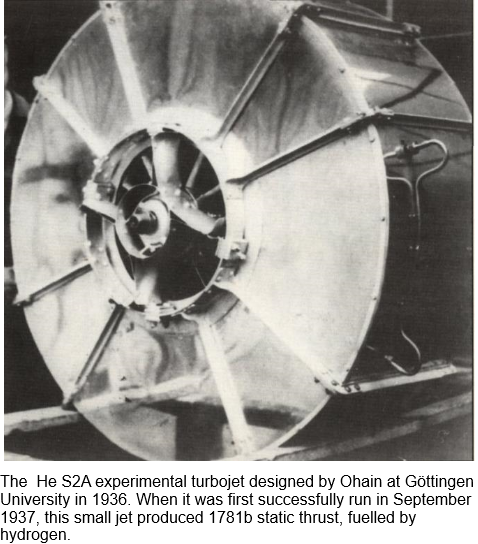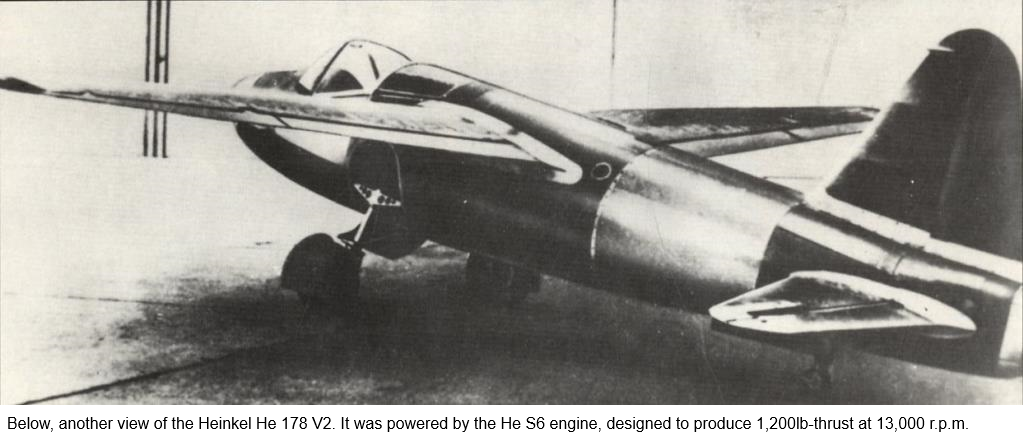Historic morning
After ground-running and taxying trials the Heinkel test pilot, Capt Warsitz, decided to make the first flight at dawn on August 27, 1939. Heinkel wrote of that historic morning: “It was a clear and beautiful morning without a breath of wind when, with Schwarzler, Gunter and von Ohain, we drove out on to the airfield [at Marienehe]. Warsitz was waiting with some riggers from the experimental section”.
In an interview which he gave me for a BBC television documentary at his home in Dayton, Ohio, in 1981, Pabst von Ohain remembered that, contrary to HeinkePs recollections: “It was early morning. Slightly foggy, but only slightly foggy. We had [at Marienehe] a short airfield; Warsitz had already, the day before, taxied the aircraft, and he thought he could make it”. The jet engine of the diminutive aircraft, which was unpainted and without markings, was started and run up. Warsitz, sitting in the small cockpit, seemed satisfied and signalled to the mechanics to remove the chocks; Ernst Heinkel rushed up to the aeroplane and grasped the gloved hand of Warsitz to wish him “happy landings”; the jet whine mounted and the aircraft gathered speed down the rather short runway. Von Ohain remembered that: “He accelerated ... it looked without any problem; he lifted off and then we lost him, because he went straight on and we did not hear anything more. We waited five minutes: a very long time. Then he came back and circled the airfield and we wondered why he is not landing. We said, oh, he feels so very good up there he does not want to land yet. In fact he ' could not see the airfield, because of the glare of the [low early morning] sun on the mist, which he later said was terrible .. . So he had to make several circuits before he could safely land”. The landing was not, according to Heinkel, without its moments: “He [Warsitz] cut the jet engine, then found he had misjudged his approach [he was overshooting] and had to sideslip. Sideslip with a new, dangerous and tricky machine! We held our breath, but the He 178 landed perfectly... it was a magnificen
moment... we all rushed over to Warsitz and the riggers hoisted both of us to their shoulders . . Test pilot Warsitz, Heinkel, von Ohain and others went over to the Marienehe mess to celebrate with a champagne breakfast. Just five days later Germany was at war . . .
Although the He 178 was demonstrated to Generals Udet and Milch, no orders followed as it was thought that the Luftwaffe could win the war with existing piston-engined aircraft. Later, following the Battle of Britain, there was a reappraisal and Heinkel was allowed to buy the Hirth engine works at Zuffenhausen to produce the S8 and the advanced He S30, an axial jet. A second, slightly enlarged, He 178 was built but never flew.
For the record, on subsequent test flights in 1941, with the uprated He S6 engine producing l,3001b-thrust, the original He 178 proved to have a maximum speed of 435 m.p.h.
A developed design, the twin-engined Heinkel He 280, powered by two He S8s, first flew on April 5,1941,40 days before the Gloster-Whittle E.28/39. The first American jet, the Bell P-59A, first flew, powered by a Whittle-based engine, on October 1, 1942.
The He 280 was to score a number of firsts: it was the world’s first true jet fighter, the first with a tricycle undercarriage; the first twin-engined jet; the first aircraft to be fitted with, and later to use, an ejection seat. It was never ordered into production, the more aero- dynamically advanced Messerschmitt Me 262, though far less developed, being selected instead.

